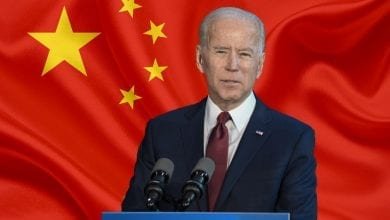Biden’s Climate Change Fantasies Are Infiltrating A Key Government Department

Bidenomics and its twin, the climate con game, have infiltrated every facet of the Biden administration. The ramifications for most Americans have felt like a kick in the teeth.
Readers will recognize the substantial shift within the Department of Interior under President Joe Biden. It morphed into a largely conservation-centric agency, rendering Western federal lands inaccessible for oil extraction, mining and other practical uses. Indeed, even constructing a single-lane, gravel, lifesaving road from King Cove to Cold Bay, Alaska has been delayed by the Administration because it’s viewed as an existential climate change threat.
In parallel, the Department of Agriculture is shifting terrain away from traditional forestry, instead opting to invest in “carbon storage.”
Not even the Pentagon escapes this trend, as it allocates taxpayer money toward making its military killing machines more eco-friendly.
Among these overt transformations, the U.S. Treasury Department’s new direction is a subtle yet profound instance of Bidenomics chaos.
As the second-oldest department in U.S. history, the Treasury was tasked with managing the national debt and financing the Revolutionary War. It initially issued redeemable “bills of credit,” which gave birth to the first national debt. Few could have imagined the United States would permit its debt to spiral out of control.
Yet, here we stand. Even the Treasury Department has deviated from its congressional mandate, pivoting toward climate change as the be-all, end-all.
This week, Treasury Secretary Janet Yellen appointed Ethan Zindler as the second “climate counselor” for the department. He’s now responsible for leading the department’s “Climate Hub,” a group guiding the department’s climate goals.
In Yellen’s words, “I believe it is imperative that we continue to take decisive action to fight climate change, for the sake of our planet and for the benefit of the global economy.”
There, she said it: The Treasury Department is leveraging its authority to bolster the global economy, even as our national debt is plundering our pockets.
With national debt growing from 52% of the gross domestic product in 1960 to 123% of GDP today, each American taxpayer is now burdened with $253,000 in debt to offset the staggering $32.6 trillion the country owes.
Economists understand that debt exceeding 100% of GDP for a sustained period of time can jeopardize a nation’s ability to repay its lenders.
The Federal Reserve’s solution is simple: Print more money and elevate interest rates. In the last 17 months, the Fed has raised interest rates 11 times in its 12 meetings, propelling the federal rate to a two-decade high.
The repercussions for American citizens are tangible. For instance, rising mortgage rates are a huge hurdle for first-time millennial homebuyers, many of whom are now compelled to stay under their parents’ roofs.
When Biden took office, the average interest rate for a 30-year fixed mortgage was at a historic low of 2.7%. This was the economic climate inherited from President Donald Trump.
Today, a mortgage costs 7.688%, marking a 184% surge in home loan rates in merely three years — the fastest recorded increase in recent memory.
This is an untenable trajectory.
Credit card debt is also exerting immense pressure on Americans, with interest rates hitting a record high of 20% amid record levels of outstanding credit card debt.
According to a WalletHub analysis, the latest rate hike will cost credit card users an additional $1.72 billion in interest charges over the next year.
Maybe you can just live in your car? The cost of car financing has risen from 5.2% to 7.2% within just one year. For a $40,000 vehicle financed over 72 months, this translates to an additional cost of $2,278, almost a 6% hike on the vehicle’s price.
Under Biden, and in Yellen’s own words, the Treasury Department prioritizes the global economy over domestic economic health. Our Federal Reserve resorts to money printing to manage this conundrum, placing our economy at an elevated risk of inflation.
As President Ronald Reagan asked in 1980, “Are you better off now than you were four years ago?”
For most Americans, the response is a vehement no.
Despite President Joe Biden’s assertions that Bidenomics is performing as anticipated, it uncomfortably echoes President Jimmy Carter’s advice in 1977 to don a sweater if we couldn’t afford winter home heating.
That didn’t fly with the public then, and Bidenomics isn’t flying with the public now.
Suzanne Downing is publisher of Must Read Alaska.
The views and opinions expressed in this commentary are those of the author and do not reflect the official position of the Daily Caller News Foundation.
All content created by the Daily Caller News Foundation, an independent and nonpartisan newswire service, is available without charge to any legitimate news publisher that can provide a large audience. All republished articles must include our logo, our reporter’s byline and their DCNF affiliation. For any questions about our guidelines or partnering with us, please contact [email protected].
Content created by The Daily Caller News Foundation is available without charge to any eligible news publisher that can provide a large audience. For licensing opportunities of our original content, please contact licensing@dailycallernewsfoundation.org




